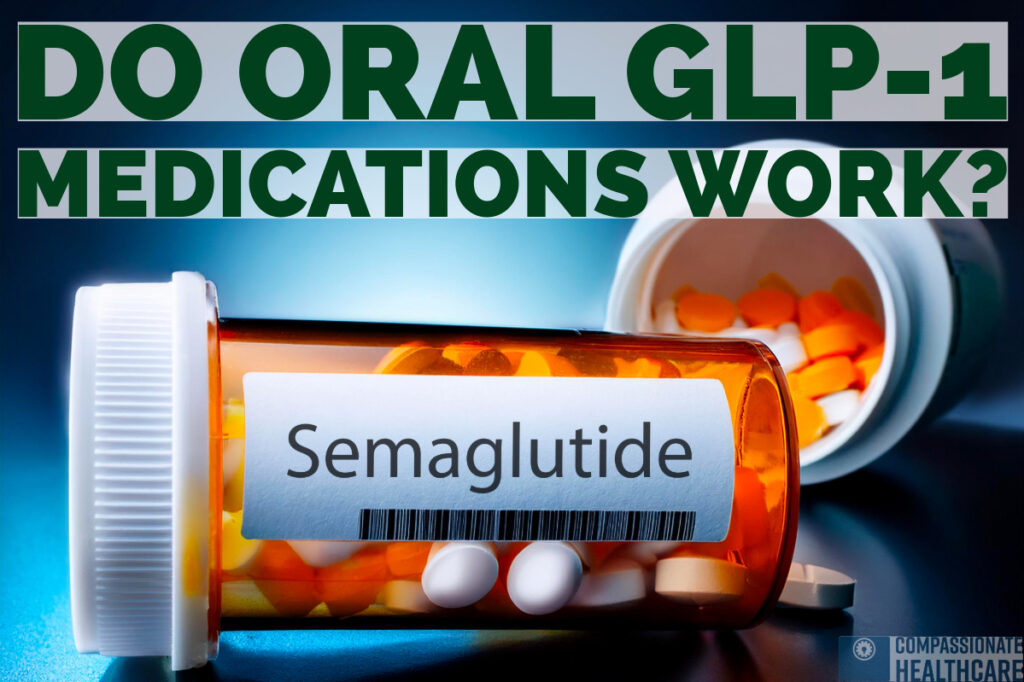
Oral Glp-1 Medications
Over the past decade, glucagon-like peptide-1 (GLP-1) receptor agonists have emerged as a breakthrough treatment for managing type 2 diabetes (T2D) and obesity. Traditionally, GLP-1 medications have been administered through subcutaneous injections, but with the rising demand for more convenient treatment options, the pharmaceutical industry has made significant strides in developing oral versions of GLP-1 medications. But do these oral options work as effectively as their injectable counterparts? This article explores the effectiveness, benefits, and limitations of oral GLP-1 medications.
Understanding GLP-1 and Its Role in Treatment
GLP-1 is a hormone that naturally occurs in the body and plays a crucial role in regulating blood sugar and appetite. It works by stimulating insulin secretion, inhibiting glucagon release (which helps prevent excessive glucose production by the liver), and slowing gastric emptying to help control hunger. These actions make GLP-1 receptor agonists an attractive option for managing both diabetes and obesity.
The Traditional Injectable GLP-1 Medications
Injectable GLP-1 receptor agonists have been highly effective in managing type 2 diabetes and obesity. Medications like semaglutide (brand names Ozempic and Wegovy), tirzepatide (Zepbound, Mounjaro), liraglutide (Victoza), and dulaglutide (Trulicity) have shown positive results in improving blood sugar control, promoting weight loss, and reducing the risk of cardiovascular events.
However, for some the injectable form has some disadvantages, including the discomfort associated with injections, the need for regular weekly dosing, injection sensitivity and some patient reluctance to inject themselves. This has fueled the search for alternative, more patient-friendly delivery methods.
The Advent of Oral GLP-1 Medications
The first oral GLP-1 medication, oral semaglutide (brand name Rybelsus), was approved by the U.S. Food and Drug Administration (FDA) in 2019. Oral semaglutide is designed to be taken once daily and is the first oral GLP-1 medication available for patients with type 2 diabetes.
Oral semaglutide is formulated using a special delivery technology that helps protect the active ingredient from being degraded in the stomach. This allows the medication to be absorbed effectively through the gastrointestinal (GI) tract, offering a more convenient and less invasive option compared to injections.
It is important to note most oral GLP1 options are compounded for patients who cannot tolerate an injection or as a method to try and get around brand name patent issues. It is well documented, however that they do not offer the greatest benefits for weight loss.
Do Oral GLP-1 Medications Work?
Efficacy in Blood Sugar Control
Studies have shown that oral semaglutide is effective in reducing HbA1c (a key measure of blood sugar control) in people with type 2 diabetes. In clinical trials, patients taking oral semaglutide experienced reductions in HbA1c similar to those seen with injectable GLP-1 medications.
For example, in the PIONEER trials (a series of studies examining the safety and efficacy of oral semaglutide), patients taking the oral formulation achieved a significant reduction in HbA1c levels, with some also experiencing weight loss. The efficacy was comparable to subcutaneous semaglutide and other injectable GLP-1 agonists.
Weight Loss Benefits
Similar to their injectable counterparts, oral GLP-1 medications also help with weight loss. In the PIONEER trials, oral semaglutide resulted in notable weight reduction in individuals with type 2 diabetes, which aligns with the effects of injectable GLP-1 medications like Wegovy. This is particularly significant for those managing obesity in addition to diabetes.
Safety Profile
The safety profile of oral semaglutide is similar to injectable GLP-1 medications, with common side effects including gastrointestinal issues like nausea, diarrhea, and abdominal discomfort. These side effects often diminish over time as the body adjusts to the medication.
Oral semaglutide is not recommended for patients with a history of medullary thyroid cancer or multiple endocrine neoplasia syndrome type 2, which is consistent with the contraindications of injectable GLP-1 medications.
Are Oral GLP-1 Medications as Effective as Injectable Ones?
While oral semaglutide offers a convenient and effective alternative to injections, there are some important considerations when comparing the two:
- Bioavailability: The bioavailability of oral semaglutide is lower than that of injectable versions, meaning that a smaller amount of the active drug reaches the bloodstream. However, despite this, clinical trials have demonstrated that the oral formulation still provides effective blood sugar control and weight loss, though slightly less potent than injections in some cases.
- Onset and Consistency: Injectable GLP-1 medications often provide more predictable absorption and a more consistent therapeutic effect. Oral semaglutide, while effective, may have a slightly slower onset of action, and its absorption can be affected by food or other medications, which means it needs to be taken on an empty stomach for optimal absorption.
- Patient Preference: Many patients prefer the convenience of oral medications over injections. Oral semaglutide provides an alternative for those who have difficulty with injections or experience significant discomfort. However, some patients may still prefer injectable options for their more immediate action and consistent delivery.
Challenges and Limitations of Oral GLP-1 Medications
Despite the advantages, oral GLP-1 medications are not without their challenges:
- Gastrointestinal Issues: The oral form can still cause nausea, vomiting, and other GI side effects, especially when starting treatment. These side effects tend to improve with time but can be a limiting factor for some patients.
- Dosage Requirements: Oral semaglutide must be taken daily, and it needs to be taken on an empty stomach with a specific amount of water, which can be inconvenient for some individuals.
- Cost and Accessibility: Oral GLP-1 medications are often more expensive than their injectable counterparts, and depending on the patient’s insurance coverage, cost can be a barrier.
- Effectivness: Oral GLP-1 medications do not deliver nearly the same efficacy for weight loss compared to the injectable options.
Future Directions
The development of oral GLP-1 medications represents an exciting step forward in diabetes and obesity management. Ongoing research is exploring other oral formulations and potential improvements in drug delivery technology. The future may see additional oral options that could provide more flexibility and improved outcomes for patients with type 2 diabetes and obesity.
Conclusion
Oral GLP-1 medications, like oral semaglutide, have demonstrated significant efficacy in managing blood sugar levels and promoting weight loss. They however do not provide nearly the same results compared to injectable GLP-1 receptor agonists. While they offer a more convenient, non-invasive option, they may have a slightly lower potency due to bioavailability and absorption differences.
Most patients who currently utilize oral GLP-1 options, discontinue treatment or transition to injectable formulations due to insufficient weight loss. Overall, oral GLP-1 medications represent an effective alternative for many patients, with the potential for widespread adoption as part of a comprehensive diabetes and obesity treatment plan. However, it’s essential for patients to consult with their healthcare providers to determine the best treatment approach based on individual needs and preferences.



